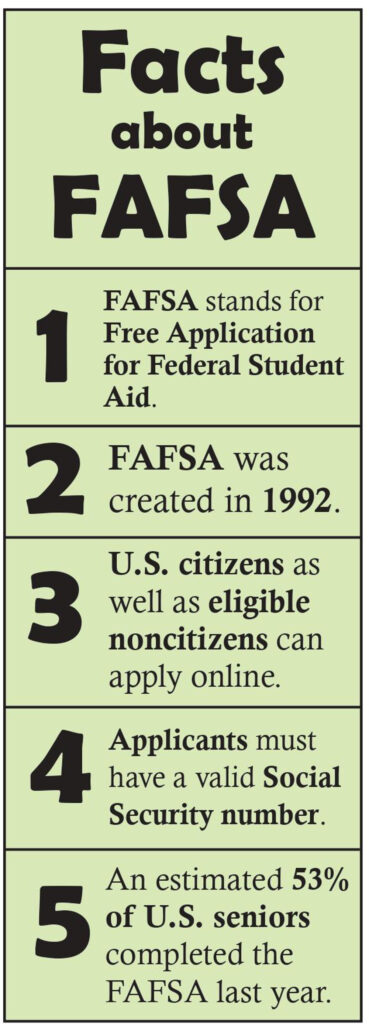
March 9, 2024
By Camille Echols
Editor-in-Chief
Like many college applicants, senior Trixie Fobi waited hours on Dec. 31 for the 2024-2025 Free Application for Federal Student Aid, better known by the acronym FAFSA, to open.
Much to their dismay, they could not fill out this form that determines their aid eligibility like they had planned, as the FAFSA website crashed repeatedly, and the form itself was not consistently accessible.
According to the financial advice website NerdWallet, to satisfy the requirements set forth in the FAFSA Simplification Act of 2020, the form now contains significantly fewer questions and a direct data exchange with the Internal Revenue Service to make financial aid more available.
Fobi said the changes made to the FAFSA have caused more harm than good.
“I’m worried that the FAFSA delay will have an impact on my college commitment,” Fobi said.
Fobi said colleges receiving FAFSA data late will impact their college commitment, as Fobi’s decision is reliant on the financial aid package they receive.
“This delay is going to risk those in need of financial aid not receiving their offers in a timely manner,” Fobi said.
A major change in the FAFSA is the replacement of Expected Family Contribution, known as EFC, with the new Student Aid Index, known as SAI.
SAI includes fewer questions, has a lower EFC minimum, offers no breaks to parents who have multiple children in college, requires students to report the income of the parent who provides the most support and takes some income out of consideration compared to last year’s form, according to the news website Forbes.

FACT BOX BY CAMILLE ECHOLS
Senior Sam Cardo, who submitted the FAFSA in January, said the U.S. Department of Education was ineffective in the way it went about making its updates.
“They could have taken more time to make the website prepared for the large number of people on it rather than have it close after an hour or two every time it reopened. That alone could have solved a lot of people’s problems,” Cardo said.
She said since FAFSA no longer offers breaks to families with multiple children in college, it will be more difficult for them to afford tuition.
“Bigger families [may] get even less financial aid and could struggle to get each child a higher education,” Cardo said.
Guidance counselor Mrs. Stacy said the delay in receiving offers from schools will impact students’ college commitments.
“I’m worried that the FAFSA delay will have an impact on my college commitment.”
“If you are not receiving information from them about their financial aid package, you might feel the pressure to commit somewhere [with a lower advertised tuition],” Stacy said.
She said the Student Services Department has been assisting students with the modified FAFSA form.
“We had a FAFSA night in January for parents and students to come fill out the FAFSA form,” Stacy said. “We guide them through, but when we don’t have the answers, we recommend them to [the Higher Education Student Assistance Authority].”
Stacy said HESAA has a helpline with experts who help students and their families with the FAFSA.
Senior Joshua Machcinski, who submitted the FAFSA in January, said his prospective colleges are making accommodations in response to FAFSA’s delays.
“Most colleges have pushed back their due dates, but I already have had mine submitted, so it’s just the Ed Department that needs to release them,” Machcinski said.
He said he hopes the changes to the form will positively impact students applying for aid.
“I hope that the changes made are worth delaying me from filling it out for two months and another two months for colleges to see them,” said Machcinski.


